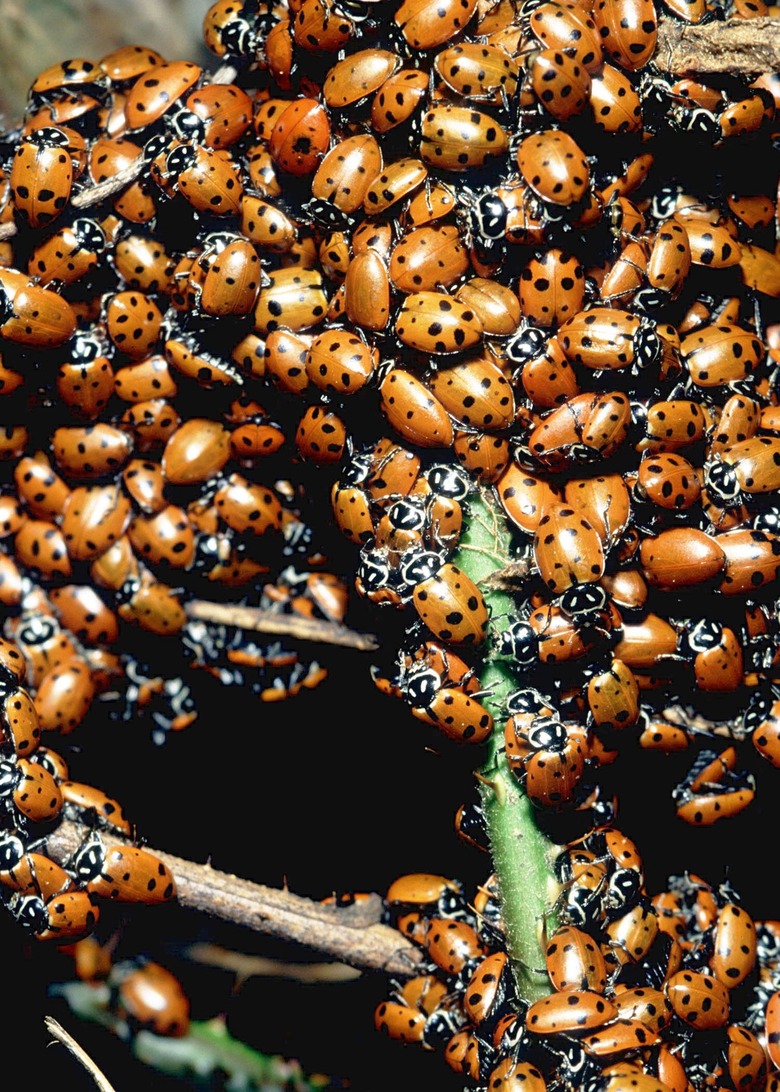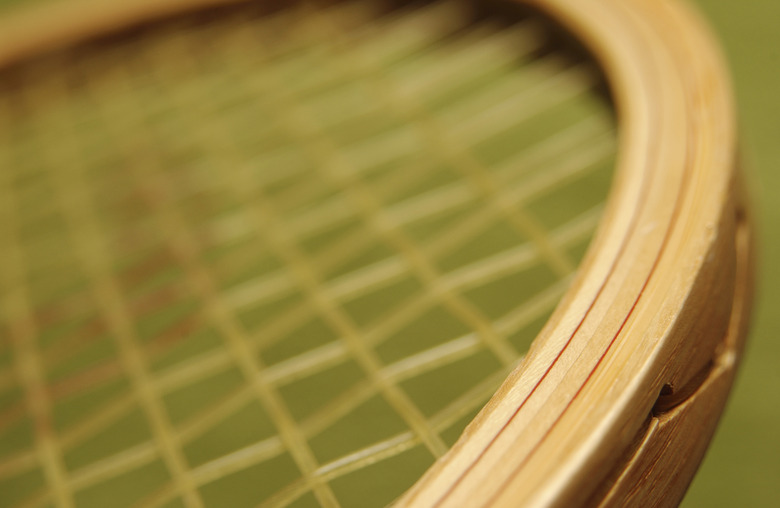Homemade Traps For Flies & Ladybugs
There are few things more aggravating than working hard all day to prepare a formal dinner, only to have it destroyed by one black fly landing on the main course of a guest's plate. Keep flies and ladybugs out of the house by making your own trap. This helps you save money and minimize the harsh chemicals brought into your home with homemade traps. Flies and ladybugs can be captured just as effectively with homemade traps as they can with manufactured traps.
Glue Pad
Glue pads and sticky strips are effective but must be made with a glue that does not dry. When placed in a high-traffic area for flies and ladybugs, glue traps will reduce your bug infestation dramatically. Tangle-Trap and Catch Master are two adhesives that work well to trap bugs and will not dry out over time. Corn syrup is effective for catching insects, but tends to be messier. Cover a spoon or knife with a layer of dish soap before applying the adhesive onto a sturdy piece of cardboard or wood. Place the trap in the area most infested by flies and ladybugs. To store the trap, cover the cardboard with a piece of wax paper. When ready to use, peel back the wax paper and start trapping flies and ladybugs.
Baited Trap
Luring prey into a trap with bait is a common hunting technique. The same principle can be applied to catching flies and ladybugs. Create a simple trap, bait it with the insects' favorite food and let the bugs do the work. A 2-liter, plastic soda bottle makes an effective yet simple trap. Measure 6 inches from the top of the bottle and cut the top portion off the bottom. Use fruit pieces or jam to trap flies and ladybugs. Lay the bait in the bottom portion of the bottle. Flip the top upside-down and slide it into the bottom so it resembles a funnel. Flies and ladybugs will come into the trap in search of the bait, but they won't be able to get out. When the trap is full, bring it outside to release the insects.
Black Light
Flies and ladybugs are attracted to black lights. Pick up a few supplies from your hardware store to make your own black light bug trap at home rather than spending a small fortune from a pest control expert. Fit a black light bulb into a clamp-light fixture. This light will attract the bugs. Punch holes into the rim of the light fixture to attach the rest of the trap. Plastic transparancies used for overhead projectors, sprinkled with baby powder or corn starch, prevent the bugs from climbing out of the trap. Cut two transparencies down the center, stopping halfway. Slide the transparencies into one another at the slits, creating a vane. Punch holes in the top of the vane. Using twisty-ties, attach the vane to the lamp fixture. When the bugs fall down the vane, they must be funneled into a collector. Cut the bottom 3 inches off a gallon milk carton. Punch four holes around the bottom of the jug's top portion and the bottom of the vane. Attach to the bottom of the vane to the holes in the jug using twisty-ties . Tape the neck of the inverted milk jug portion to the neck of a second milk jug. As bugs fall through the funnel, they will land in this second jug waiting to be released.
Sticky Swatter
Fly swatters work well to kill bugs. The same principle can be used to capture flies and ladybugs flying in mid-air. According to Stephen Tvedten, Integrated Pest Management expert, flies have clear vision from only 18 inches and closer. Cover a large, old tennis racket on both sides in sticky tape, such as duct tape, rolled onto itself. Swing the racket in a swarm of flies and ladybugs. Trap the insects on the tape.




